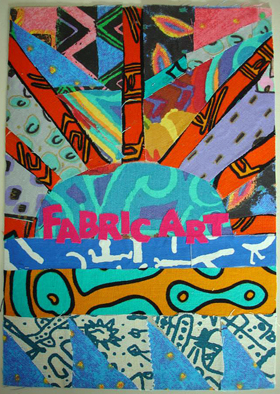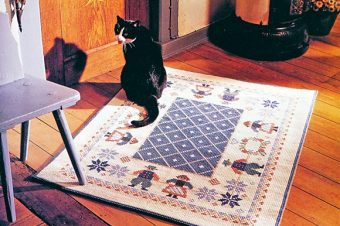A Selection of the Best Sketching Books Available
Sketching: Techniques and Tips for Successful Sketching
 An essential little book – perfect for the pocket or art bag – covering all practical aspects of sketching and drawing. Sketching is a skill that every artist needs to master and this handy book shows you how in a very clear and simple way. Jackie starts by describing all the different media used for sketching, including pencils, charcoal, coloured pencils, pens, pastels, watercolours and gouache, as well as the different types of sketchbooks. She then looks at the basic techniques of sketching, emphasizing the importance of observation and showing how to make marks, use tone, create 3-D form and portray pattern. She then covers a wide range of subjects, such as plants and flowers, skies, animals, the urban landscape, and figures and portraits, explaining how to compose your sketches and giving useful tips about sketching on the move. There’s also a fascinating section on sketching from the Masters, to provide additional inspiration. The instruction is clear and concise throughout, providing an ideal resource for artists of all levels to dip into when sketching out on location.
An essential little book – perfect for the pocket or art bag – covering all practical aspects of sketching and drawing. Sketching is a skill that every artist needs to master and this handy book shows you how in a very clear and simple way. Jackie starts by describing all the different media used for sketching, including pencils, charcoal, coloured pencils, pens, pastels, watercolours and gouache, as well as the different types of sketchbooks. She then looks at the basic techniques of sketching, emphasizing the importance of observation and showing how to make marks, use tone, create 3-D form and portray pattern. She then covers a wide range of subjects, such as plants and flowers, skies, animals, the urban landscape, and figures and portraits, explaining how to compose your sketches and giving useful tips about sketching on the move. There’s also a fascinating section on sketching from the Masters, to provide additional inspiration. The instruction is clear and concise throughout, providing an ideal resource for artists of all levels to dip into when sketching out on location.
Sketching People
 Giovanni Civardi has built a formidable reputation worldwide for his skills as both an artist and a teacher, and here he provides a unique introduction to the art of sketching the human form. The focus of the book is very much on Giovanni’s exquisite drawings of a broad range of subjects of all ages, clothed and unclothed, and in a variety of poses and situations that include figures in both formal poses as well as in ‘everyday’ situations such as reading, shopping and sleeping. There is also a large section focusing on drawing heads and faces, and the book ends with a section devoted to drawings of statues in the Musee Rodin, Paris – drawing sculptures being an ideal way to learn how to draw the human form. The accompanying text provides concise, clearly written explanations of the subject, including materials, equipment and practical considerations, and the author’s in-depth knowledge of the subject is apparent throughout. This is therefore an ideal introduction to sketching figures for the absolute beginner, as well as a source of information and inspiration for artists of all abilities.
Giovanni Civardi has built a formidable reputation worldwide for his skills as both an artist and a teacher, and here he provides a unique introduction to the art of sketching the human form. The focus of the book is very much on Giovanni’s exquisite drawings of a broad range of subjects of all ages, clothed and unclothed, and in a variety of poses and situations that include figures in both formal poses as well as in ‘everyday’ situations such as reading, shopping and sleeping. There is also a large section focusing on drawing heads and faces, and the book ends with a section devoted to drawings of statues in the Musee Rodin, Paris – drawing sculptures being an ideal way to learn how to draw the human form. The accompanying text provides concise, clearly written explanations of the subject, including materials, equipment and practical considerations, and the author’s in-depth knowledge of the subject is apparent throughout. This is therefore an ideal introduction to sketching figures for the absolute beginner, as well as a source of information and inspiration for artists of all abilities.
Start Sketching and Drawing Now: Simple Techniques for Drawing Landscapes, People and Objects
 A complete course for the can’t-wait-to-get-started beginner! Got the urge to draw? What are you waiting for?! Getting started is as easy as 1-2-3 with Grant Fuller’s Start Sketching & Drawing Now! Packed full of easy and fun techniques, readers will learn to create accurate and expressive likenesses of people, animals, landscapes, and objects. Suddenly rendering even something as mundane as an electrical plug will become an adventure in seeing-and as you’ll discover, learning how to really see your subject is half the battle. A progressive series of lessons range from proven exercises for developing hand-eye coordination, expressive line work and keen powers of observation, to creating the illusion of depth and dimension, realistic textures, reflections and more 30 step-by-step demonstrations cover an exciting range of subjects, including still lifes, landscapes, architecture, animals and people Graphite pencil is the featured medium, but charcoal, pen & ink, colored pencils and pastels are also explored Practice is important, of course, but this expert instruction will fast forward you past many hours of trial, error and frustration. With every lesson you’ll develop skills and confidence. Get started today with simple materials you may already have or can easily pick up at any major retailer. Before you know it, you’ll be able to capture a wide range of subjects with artistic style and vision.
A complete course for the can’t-wait-to-get-started beginner! Got the urge to draw? What are you waiting for?! Getting started is as easy as 1-2-3 with Grant Fuller’s Start Sketching & Drawing Now! Packed full of easy and fun techniques, readers will learn to create accurate and expressive likenesses of people, animals, landscapes, and objects. Suddenly rendering even something as mundane as an electrical plug will become an adventure in seeing-and as you’ll discover, learning how to really see your subject is half the battle. A progressive series of lessons range from proven exercises for developing hand-eye coordination, expressive line work and keen powers of observation, to creating the illusion of depth and dimension, realistic textures, reflections and more 30 step-by-step demonstrations cover an exciting range of subjects, including still lifes, landscapes, architecture, animals and people Graphite pencil is the featured medium, but charcoal, pen & ink, colored pencils and pastels are also explored Practice is important, of course, but this expert instruction will fast forward you past many hours of trial, error and frustration. With every lesson you’ll develop skills and confidence. Get started today with simple materials you may already have or can easily pick up at any major retailer. Before you know it, you’ll be able to capture a wide range of subjects with artistic style and vision.
Sketching: The Basics
 In 2011, following the phenomenal global success of Sketching, which has sold over sixty thousand copies in two years, authors Koos Eissen and Roselien Steur debut the sequel entitled Sketching: The Basics. In fact, prequel would be a better word for this new book, since it is aimed towards the novice designer. Whereas Sketching shows you how to draw various aspects of shape and form, and serves more as a reference book, The Basics explains things in more detail, taking the reader by the hand and guiding him step by step through all the various aspects of drawing that novice designers come up against.
In 2011, following the phenomenal global success of Sketching, which has sold over sixty thousand copies in two years, authors Koos Eissen and Roselien Steur debut the sequel entitled Sketching: The Basics. In fact, prequel would be a better word for this new book, since it is aimed towards the novice designer. Whereas Sketching shows you how to draw various aspects of shape and form, and serves more as a reference book, The Basics explains things in more detail, taking the reader by the hand and guiding him step by step through all the various aspects of drawing that novice designers come up against.
The Basics explains the rudiments of learning to draw both clearly and comprehensively, using step-by-step illustrations, examples, and strategies. You will learn to use and master the different techniques and also how to apply sketches in the design process.
It is the perfect book for those just starting out in sketching, for the first years of art and design courses, and for those who wish to revise the basics of good sketching; it is a simple and efficient way of learning all you’ve ever wanted to know but have never had explained to you.
Koos Eissen is an associate professor at the Delft University of Technology and teaches freehand drawing classes at the Faculty of Industrial Design Engineering.
Roselien Steur teaches at the Faculty of Visual Art and Design, Utrecht School of the Arts.
Practice Makes Perfect Sketching & Drawing
 Drawing is a language, and Practice Makes Perfect: Sketching and Drawing contains the grammar and vocabulary necessary for readers to develop their own style. It is also a book that doesn’t believe in ‘can’t draw’. After a brief introduction and expansion on how the book works, would-be artists are encouraged to consider their individual setups. They are then taken through a series of clearly illustrated, written and designed exercises on the basics of mark-making. Each series is based around a main theme, such as composition or tone, and each section concludes with a more detailed, four page ‘genre project’ that brings the separate elements together. The book is informed but informal and presented in a combi-pack with an accompanying sketch pad, so that readers can instantly practise the drills and skills provided.
Drawing is a language, and Practice Makes Perfect: Sketching and Drawing contains the grammar and vocabulary necessary for readers to develop their own style. It is also a book that doesn’t believe in ‘can’t draw’. After a brief introduction and expansion on how the book works, would-be artists are encouraged to consider their individual setups. They are then taken through a series of clearly illustrated, written and designed exercises on the basics of mark-making. Each series is based around a main theme, such as composition or tone, and each section concludes with a more detailed, four page ‘genre project’ that brings the separate elements together. The book is informed but informal and presented in a combi-pack with an accompanying sketch pad, so that readers can instantly practise the drills and skills provided.








